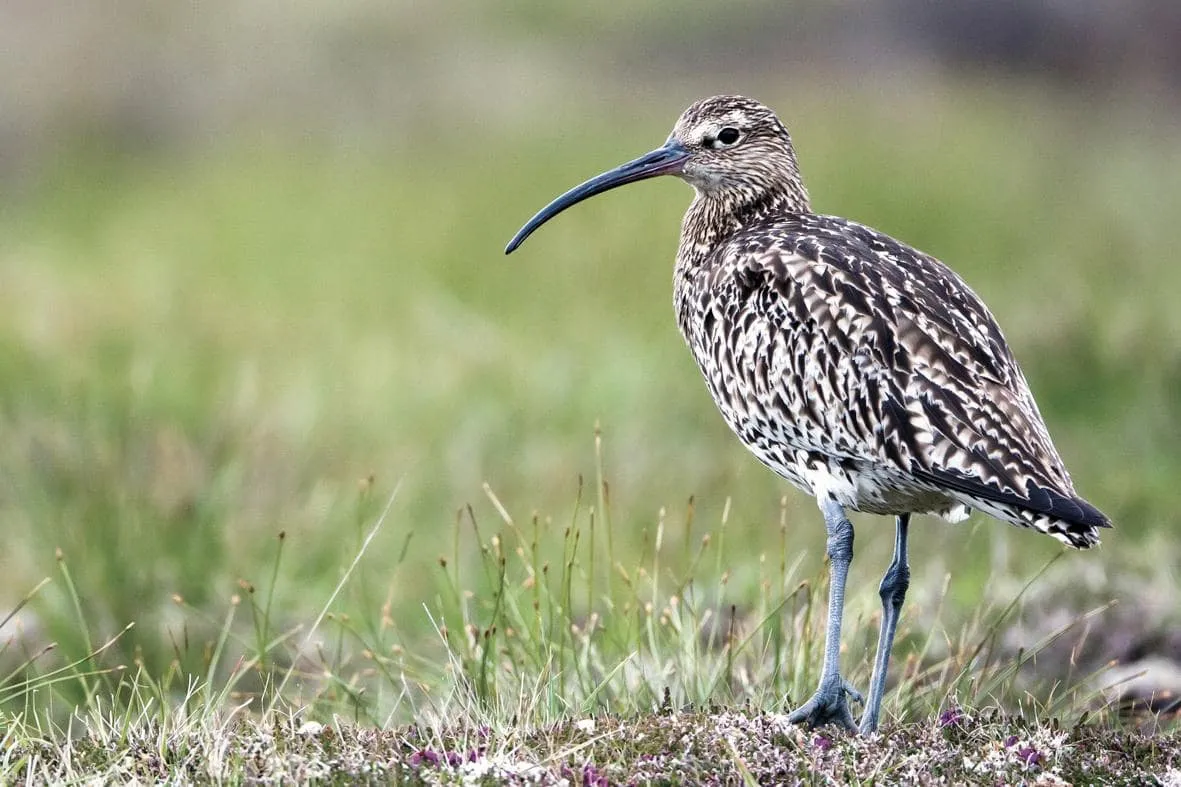The Gamekeeper Wader Transects project allows gamekeepers to contribute scientifically-rigorous data on waders on managed estates – some of the last UK breeding strongholds.

Time, skill and support
A minimum of three visits over the spring/summer can be undertaken alongside other keeping duties.
Identify the main British breeding wader species (mostly Common Sandpiper, Curlew, Dunlin, Golden Plover, Lapwing, Oystercatcher, Redshank and Snipe) and some relevant behaviours.
Gamekeeper Wader Transect project materials include field instructions, support for data entry, and a Wader Survey Behaviour Guide.
About Gamekeeper Wader Transects
The Gamekeeper Wader Transects (GKWT) make use of gamekeeper knowledge to contribute scientifically rigorous data to a national wader monitoring scheme.
Upland areas managed by gamekeepers include some of the last strongholds of breeding waders in the UK; grouse moors represent 7% of UK land cover but hold 36% of our internationally important and threatened breeding Curlew population. Gamekeepers’ familiarity and knowledge of the wildlife on the land they manage to put them in an excellent position to monitor waders in these important but relatively understudied habitats.
GKWT data will add to other monitoring schemes to build a clearer picture of landscape trends in wader abundance and productivity.
The survey takes place each year, requiring a minimum of three visits each spring/summer to a transect chosen by the participant. Participants need to be able to confidently identify the main British breeding wader species and some relevant behaviours. You do not need to be a gamekeeper to take part in this survey, but you do need explicit permission from the landowner or manager to undertake these surveys.
History and future of GKWT
The scheme has its roots in collaborative work from 2017 to 2019 between the BTO and the Yorkshire Dales National Park Authority, the Cairngorms National Park Authority and participating estates. Please see BTO Research Reports 703 and 723 for further information. Gamekeepers in these areas have continued to complete the transects each year since.
We are looking to engage other moorland groups and estates across the UK and further develop the scheme. If you are a Moorland Coordinator, National Park Authority, or own, manage or work an estate anywhere in the UK, please get in touch at waders@bto.org.
How to to take part
Please email waders@bto.org to discuss setting up Gamekeeper Wader Transects on your estate or through your organisation (no commitment to complete the survey).
All you need is the ability to identify the main British breeding wader species and basic behaviours (mostly Common Sandpiper, Curlew, Dunlin, Golden Plover, Lapwing, Oystercatcher, Redshank and Snipe). It requires a minimum of three visits over the spring/summer which can be undertaken alongside other work on your estate.
- Winter/early Spring: please email waders@bto.org to discuss setting up Gamekeeper Wader Transects on your estate or through your organisation (no commitment to complete the survey).
- April: first survey visits take place
- May: second survey visits take place
- June: final survey visits take place
Deadline
Return your completed/updated Data Spreadsheet by 30th November.
Code of Conduct
Volunteers must follow BTO’s Code of Conduct. This code applies to our staff, our members, and volunteers, including surveyors and participants in the Ringing and Nest Record Schemes, (hereafter referred to collectively as ‘staff and supporters’). It applies to all BTO activities, whether online (including meetings and events, telephone, letter, and email) or offline (any face-to-face interaction). We've also written some guidance for volunteer fieldworkers, which will help beginners in particular.
Resources
- Field Instructions
- Survey Cover Sheet
- Data Entry Guidance
- Data Entry Spreadsheet (XLSX)
- View the Wader Survey Behaviour Guide for guidance on recording wader behaviour in the field.
- BTO Code of Conduct
Project team
Leads
Contact
- waders@bto.org
Project timeline
- April: first survey visits take place
- May: second survey visits take place
- June: final survey visits take place
- November: return your completed/updated Data Spreadsheet